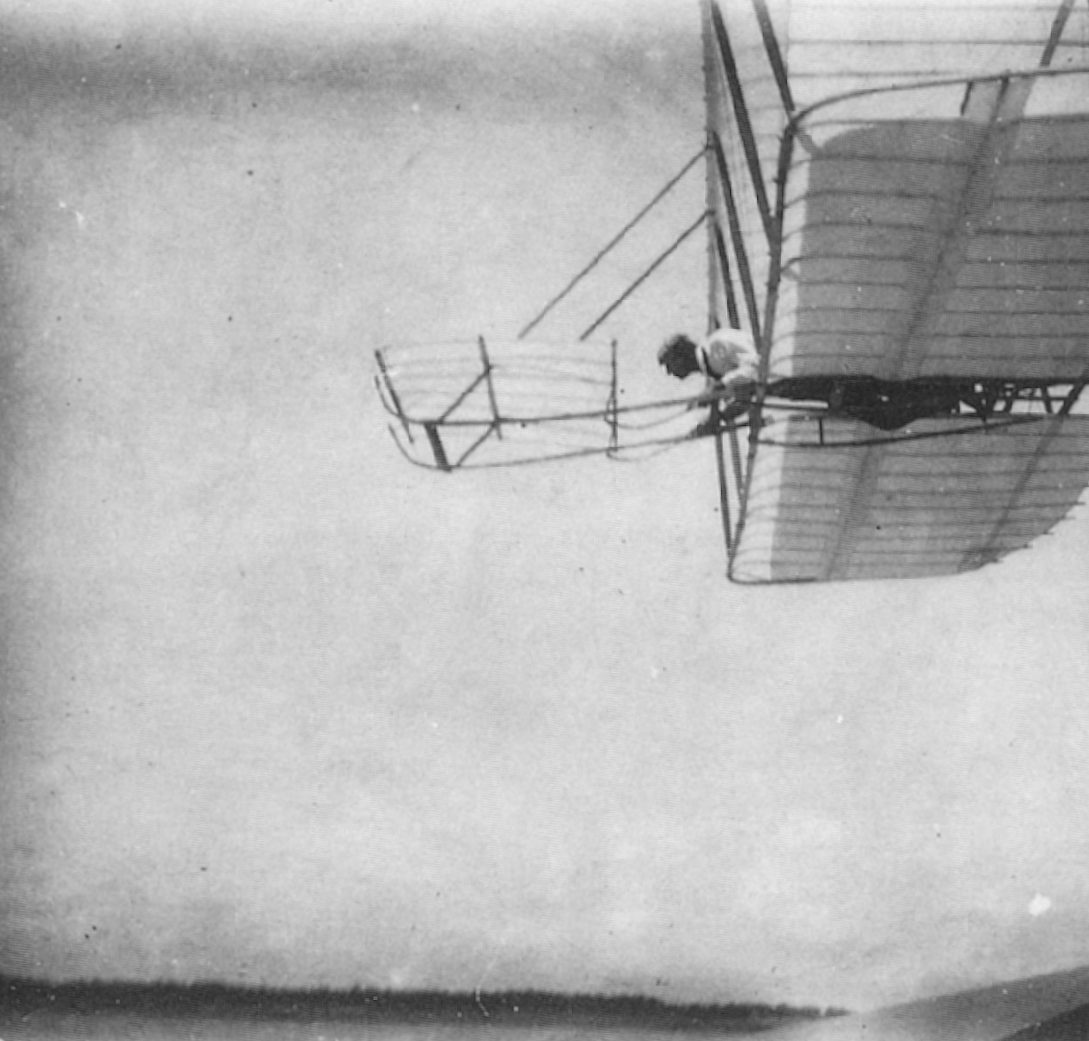 The First Heavier-than-air, powered, controlled flight 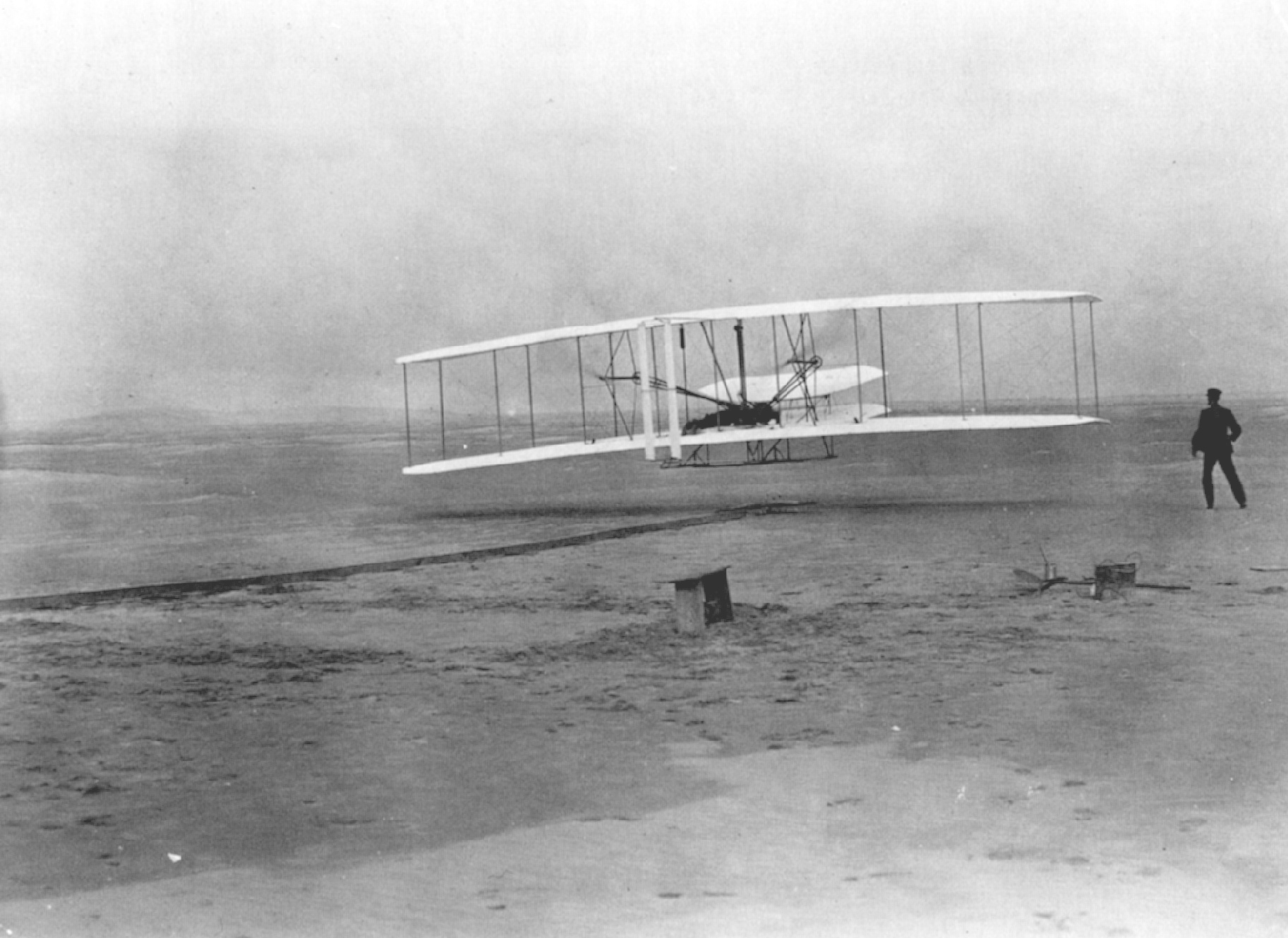 The 1901 Wright Glider in flight. 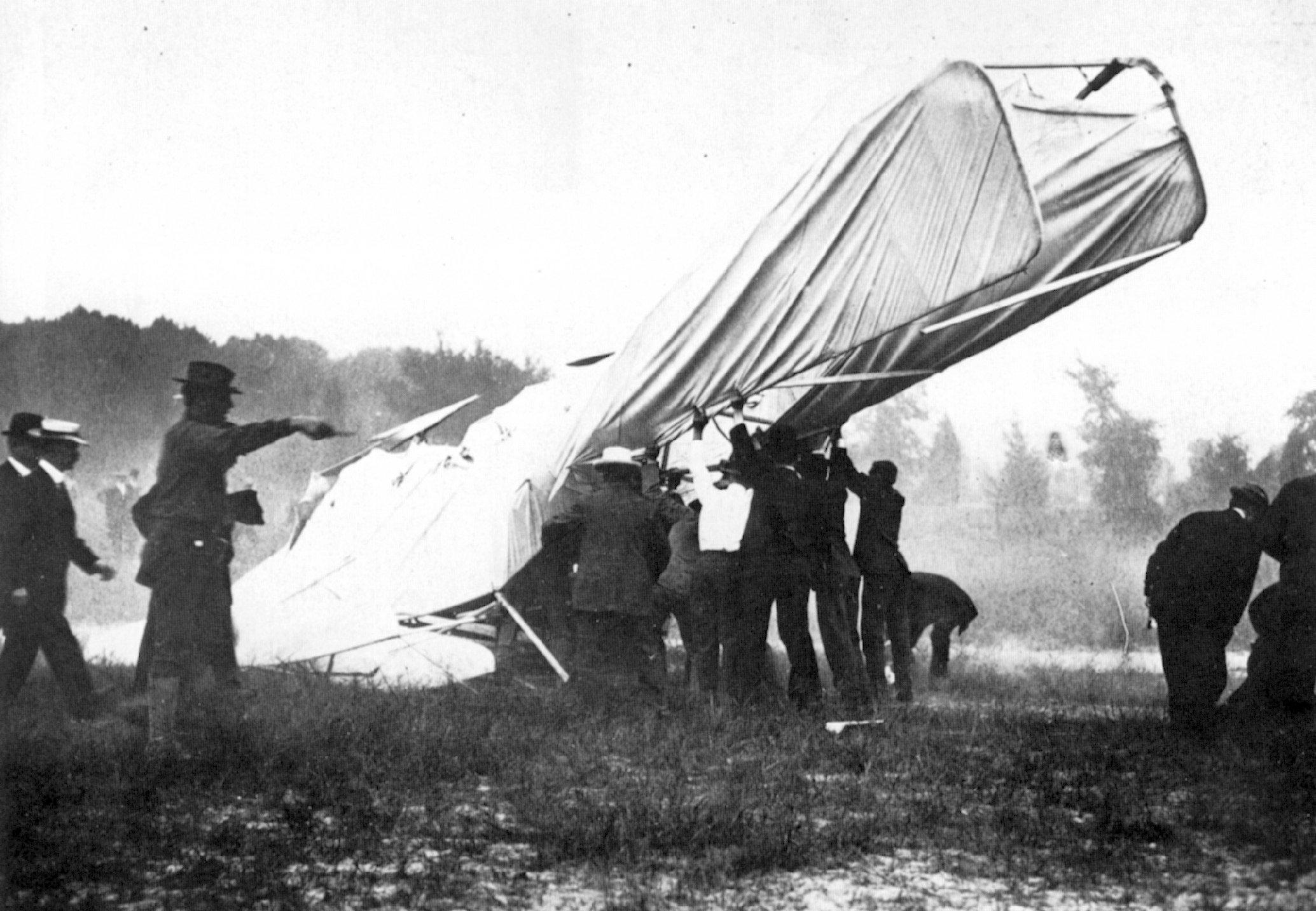 The crash of the Military Flyer in 1908. 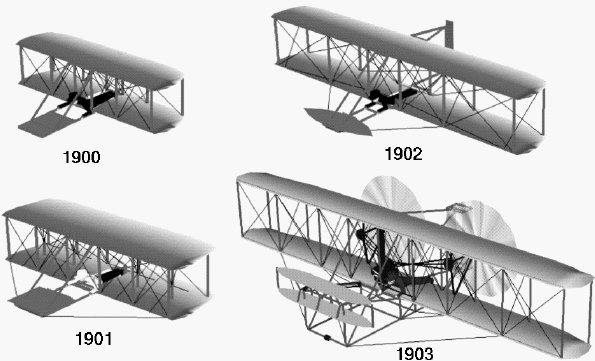 This is all four Wright Fliers up to 1903 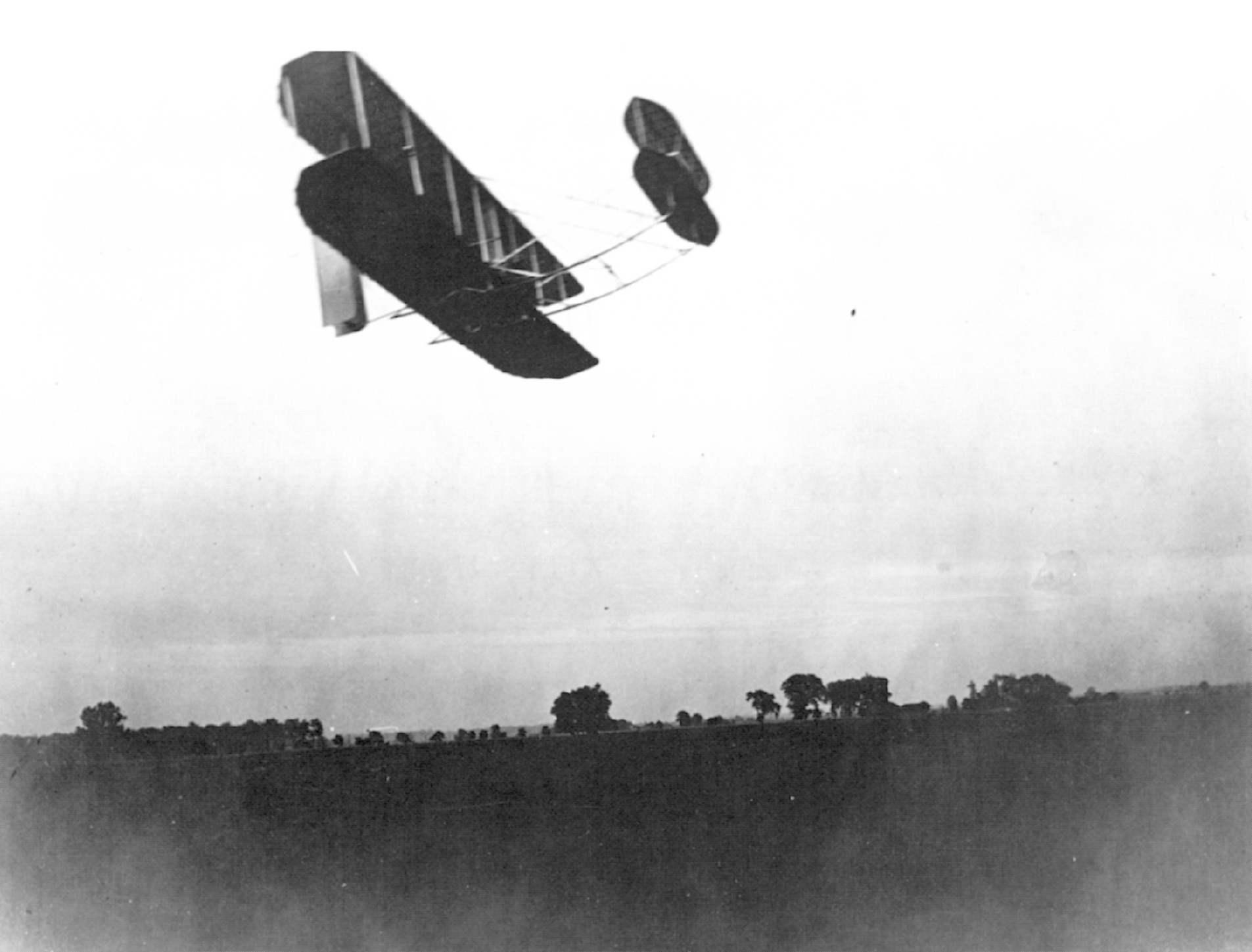 The world's first practical airplane, the Wright Flyer 3, in flight in 1905. |
Test FlightsThe Wright Brothers did many tests and experiments before they achieved their first airplane flight. The one hundred and fifty flights only lasted a total of forty-five minutes but were worthwhile in the end. They used a wind tunnel to determine what material was used, the size and shape that achieved the most lift and how to fully control the plane. They ended up using balsa wood, aluminum wire, and cotton cloth as well as deciding to use large elevators to control the plane. With this data they could achieve their wanted goal, a controlled, powered flight. The FlightThe flight in December 17, 1903 would have been marvelous to watch. It was a cold morning as the flyer lifted on the 50-foot catapult ascending 30 feet into the air and flew one hundred feet before descending back to earth and landing one hundred and twenty feet from the catapult. The world then was in new era and had concurred every form of transportation from when men learned to build roads and then ships. Now, because of the two amazing brothers and their tiring efforts man had conquered the sky. Kitty HawkThe location of the amazing flight was at Devil Hill north of Kitty Hawk. The sand was a cushion for the many crashes and the coasty climate often had strong gust of wind decreasing their need for ground speed. It also had a very shear drop following the end of the catapult giving the plane more time to gain enough speed to achieve minimum lift. The Wright Flyier SeriesThe Wright Brothers built many planes. They started producing flyable planes in 1901. The 1901 flyer was a non-powered non-controllable plane, much like the other pilots that tried to fly prior to this. The 1902 flyer was actually a flyable glider. The thing that made them different from the last year’s model as that it was controllable. The 1903 are their most famous flyer. It was a heavier-than-air, powered and controllable plane. The 1904 flyer was an improvement to their 1903 flyer because of the fact that there were two places for people to ride. The 1905 flyer was also an improvement because it could fly faster and the pilots could sit not lay. Many more were later developed for the military, had wheels, and many more features that lead to today’s aircraft. Plane SpectsThe Wright Brother’s plane was a marvel of aerodynamics. The plane was made of balsa wood and the wings were wrapped in cotton cloth. The Wright Brothers, in their bicycle shop, built the engine from scratch. It was made of a V4 engine block and had 60-horse power. It had enough power to pull the plane through the air at 30 mph. The plane had rudders and vertical ailerons. This let the plane yaw, pitch, and turn. Yawing is when the nose of the plane moves left or right. Pitch is when the plane goes up and down. And turning is when the whole plane lifts one wing and goes the opposite direction. The Brothers used their bicycle engineering skills to build the “Wright Flyer”. The plane was 42’ 5” from tip to tail, 27” from tip of the wing to the opposite wing tip, and with the pilot it weighed 750 pounds (340 kg). Orville Wright was the intended pilot and the total cost of the plane was a little under $1000. They paid this bill with the profits from their bicycle shop. The plane was originally invented in Daytona, Ohio. The “Wright Flyer” was a remarkable engineering feat made by Wilbur and Orville Wright. |